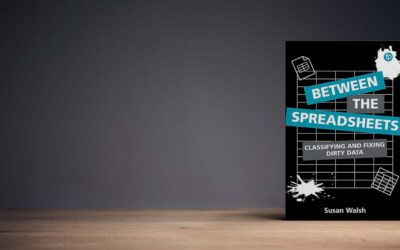Interview with the Editors: Economic Considerations for Libraries, Archives, and Museums
Lauren Hays
Lorraine A. Stuart, Thomas F.R. Clareson, and Joyce Ray edited the forthcoming publication Economic Considerations for Libraries, Archives, and Museums to be published by Routledge in November of 2021.
The book is available for pre-order and can be found here. I believe this book has a lot to offer the library, archive, and museum communities, and I am excited to share my interview with the editors.
1. Please describe your professional roles.
Lorraine: For the past five years I have been Head of Special Collections at the University of Southern Mississippi. Actually, I have been the Curator of Historical Manuscripts, too – I hold a dual role. For the prior two decades, I directed the archives at the Museum of Fine Arts, Houston, which is one of the top ten art museums in the country. It was while I was there that I first became interested in the economics of the cultural sectors. Since I have been at Southern Miss, I have seen how Special Collections functions within an academic library, placed within a University in a much smaller city – approximately two percent the size of Houston proper. Some of the dynamics and characteristics are similar and others different. The University is one of the area’s major economic drivers. University President Rodney Bennett has really focused on campus expansion, renovation, and appearance, the value of which I understand because of my background. Within University Libraries, however, Special Collections has a more significant role as far as exhibitions, outreach, and fundraising, which is gratifying to me.
Tom: I am Senior Consultant for Digital and Preservation Services at LYRASIS, the largest library, archives, and museum network in the US. I also serve as Project Director for the Performing Arts Readiness project, an initiative funded by the Andrew W. Mellon Foundation to help performing arts organizations nationwide learn how to protect their assets, sustain operations, and be prepared for emergencies. Working in collaborative networks since the beginning of my career (at OCLC, Amigos Library Services, PALINET, and now LYRASIS), I have had the opportunity to see collaborative projects result in many of the most positive changes we have witnessed in digitization, preservation, exhibition design, and disaster recovery, among other areas of library, archives, and museum practice.
Joyce: I direct the digital curation program in Advanced Academic Programs at Johns Hopkins University, where students can earn a graduate certificate in digital curation, either alone or in combination with an MA in Museum Studies or an MA in Cultural Heritage Management. I started my professional career as a librarian with an MLS degree but quickly pivoted to special collections and archives. After 10 years at the US National Archives and Records Administration, I moved to the newly created Institute of Museum and Library Services in 1997. At IMLS I directed competitive grant programs for libraries, archives, and library-museum collaborations, so I got the opportunity to observe trends and innovative projects across all LAM sectors. This experience has helped me participate in educating emerging professionals who are interested in how digital technologies are profoundly impacting the entire LAM spectrum.
2. You all co-edited the forthcoming publication, Economic Considerations for Libraries, Archives, and Museums. What motivated you to edit this book?
Lorraine: As you may know, prior to the book deal, the three of us had organized a series of panels given at the 2018 annual meetings of the American Library Association, the Society of American Archivists and the Museum Computer Network. Before we had even given the last two, Heidi Lowther from Routledge’s UK office sent me an email expressing interest in the topic. Over the next four months, I conferred with her and Tom and Joyce. In October, Heidi invited us to submit a formal book proposal. It is not often you receive an invitation like that from a major publishing house! We knew it was going to be a lot of work, but it was a topic we certainly felt worthwhile; looking back, what brought it about was Heidi’s recognition that it was an important topic from a perspective often ignored in the cultural heritage sector – economics.
3. What changes have you seen in libraries, archives, and museums during the course of your careers?
Joyce: Without a doubt, the emergence of digital technologies, not only to document and manage collections but also to digitize content and acquire and manage born-digital content by all three LAM sectors (for example, e-books, digital media art, research data, and born-digital archival materials ranging from census data to digital photographs and electronic theses and dissertations). This required the development of standards to ensure long-term maintenance of digital assets, and also adoption of those standards by as many cultural heritage institutions as possible to promote interoperability and meet the growing user demand for online content. This was a new way of thinking about LAM collections, since users didn’t much care whether the information came from a library, an archive, or a museum. The Google Book Search Project, which Peter Botticelli and I discuss in our chapter, opened the floodgates to mass digitization and stimulated the development of Europeana, the first large-scale digital library, which incorporates digital content from European libraries, archives and museums, the history of which Monika Hagedorn-Saupe discusses in her chapter.
Lorraine: Technology of course has been the largest change agent over the course of my career. How it has impacted and may potentially benefit practices within the LAMs is a topic discussed in many of the chapters. Other than technology, I have seen archives open up significantly – primary sources are not just for scholars anymore. If I were to look back as far as my childhood, I would say that I always had a fascination with my neighborhood and school libraries and what was then the Delgado Museum of Art in New Orleans, but libraries and museums are very different creatures now. They are infinitely more robust, which is remarkable and wonderful to see (although I confess to still seeking out the quiet spots at times.)
4. Why do you believe collaboration between libraries, archives, and museums is necessary?
Tom: I believe we can learn and improve our organizations by seeing what good practices our colleagues across the LAM field are developing. I also think that collaboration is going to be a necessity as we try to recover from the economic damage from COVID and make necessary changes on social justice issues. Collaboration can help LAMs jointly gain funding for projects across organization types.
Lorraine: I think there is a spectrum on which collaboration ranges from “desirable” to “necessary”. I’d like to see collaboration driven by economies of scale rather than of necessity – what becomes possible and how much interest and energy is generated when LAMs partner with each other. There’s also a benefit to emulation – what is working in one of the three professions that may likewise benefit another.
Joyce: I believe the universal interest of online users in digital content was the driver. LAMs recognized that online users were interested in far more content than they had realized, if those users didn’t have to travel to use collections in person. What had been specialized “ivory tower” collections in research universities used only by scholars now attracted teachers, home-schoolers, genealogists and the general public. If LAMs didn’t put their content out there in the online public domain, that space would have been occupied by commercial providers and non-authoritative sources. This realization has affected how LAMs think about their digital content—not as an “add on” but as an essential part of their mission to educate and inform the public as well as to serve scholars. To do that effectively, LAMs must implement standards to allow searching across collections, not only across the professional sectors but also across national boundaries. This trend has become an even more urgent necessity during the global COVID-19 pandemic.
5. What, if anything, surprised you as you edited the book?
Tom: My favorite part of working on the book has been to see the different approaches libraries, archives, and museums are taking to economic issues, and especially to see the wide variety of scenarios internationally. I truly learn more each time I reread the chapters.
Joyce: It has been heartening to see the amount of collaboration that is already taking place across the LAM sectors nationally and internationally. It is also encouraging to see the tools that are in place or in development to support continued collaboration and to reduce costs through economies of scale. But there are also ideas presented in the book for collaborations at the local (and non-digital) level; these are inspiring and provide a way for LAM professionals—especially new professionals who may not have travel support from their employers—to meet and collaborate with colleagues they might not otherwise encounter. This is encouraging for the future of all cultural heritage organizations.
6. What do you hope will change in libraries, museums, and archives as a result of this book?
Lorraine: What I would hope is that practitioners in the cultural heritage sectors, particularly librarians and archivists, will reflect more on how their professions are impacted by economic factors and, conversely, how they impact local and broader cultural economies. It is even more important for administrators to look through that lens and to consider sustainability in terms of economics.
7. What audience will benefit the most from this book?
Lorraine: The most? I would say administrators of small to medium cultural heritage institutions. I’d also hope it would influence graduate curricula and those preparing for or new to the profession.
Tom: I think this book is especially good for students and young professionals as they start considering career directions. I also believe that the book can be a shared reading across library, archive, and museum studies graduate programs that are looking at the future of these professions. And, staff and administration in LAMs will be able to expand their view of the fields through learning about international approaches to some of the most important issues in culture and the arts.
Joyce: I think any LAM professionals who are interested in the future direction of their profession. My experience leads me to believe that grass-roots efforts can become sustainable (sometimes starting with grant funding, but not necessarily), if there are tangible and even intangible results. I believe it’s hard for professional associations to sustain collaborative efforts with other associations in the sector because they depend on annual meetings and dues to survive; practitioners and educators across the spectrum will need to promote the idea of collaboration and create opportunities where they can.
Tom: I hope the book will open the eyes of readers – both professionals and students – about all of the possibilities for collaborative work that are out there. I think the book will help to grow grassroots collaborative efforts. And maybe this can re-start the discussions between Library/Archive/Museum professional associations, as discussed in the book, and in our discussion here today.
8. What do you predict for the future of cultural heritage institutions (libraries, archives, and museums)?
Lorraine: I think a successful future for cultural heritage institutions would be concentrations – either physically or virtually – that bring together libraries, archives and museums as well as performing arts venues and related industries. Virtually, you see the success of Europeana. Physically, you see thriving museum districts and theater districts, and those could easily encompass libraries and archives as well as cottage industries with even greater success.
The immediate future poses some concerns; for years prior to the pandemic the economy – particularly in the US – has been quite good and the cultural heritage sector has benefitted from record gains in the stock market, increased attendance, and generous donations. Leaner times may well be on the horizon as well as, globally, a stifling of freedom of expression, which is key to the creativity that spawns cultural heritage. In a way, that makes the book timelier because we are looking at models to sustain operations, to preserve cultural heritage, and to innovate despite challenges.
Tom: Libraries, archives, museums, and the performing and visual arts were hit hard by COVID-19 but have shown a great deal of resilience in their response to the crisis. Every day, I hear a new story about how LAMs are inventing methods to meet audience needs in this new environment. I believe collaboration and being open to change will be of key importance in the future of arts and culture. Just this week, with the large swath of damage from Hurricane Ida, we have seen cultural and arts groups working together to begin recovery, from Louisiana to New Jersey and in many locations between. And, unfortunately, because of the effects of climate change, collaborative recovery approaches may be needed more and more often.
Joyce: More attention to online users for access to content, in addition to increased use of social media for marketing and awareness-building. LAMs can also expand their audiences by interacting and collaborating with aligned sectors, such as heritage sites and tourist bureaus. But I also think audiences are eager to return to see authentic original objects, so let’s not lose sight of that.
9. How is technology impacting the economics of cultural heritage institutions?
Joyce: The importance of economies of scale in the digital realm cannot be over-emphasized. We see examples in cases such as the Deutsche Digitale Bibliothek (German Digital Library), which leads in the development of digital content in German libraries, archives and museums and feeds its metadata to Europeana. Many smaller institutions would not have the capacity to do this work independently. In the US, some statewide digital libraries have provided services including digitization and preservation of digital content to smaller institutions in their states, as well as submitting metadata to the Digital Public Library of America, which reaches a far larger audience than single institutions can. Also, more software is being developed to manage collection information as well as digital content, which lowers the cost.
Tom: Technology, through digitization and virtualization, have brought some of our most important library, archival, and museum resources to a wider universe of users. For the arts, it is getting the work of organizations like Dance Theatre of Harlem out to wider, global audiences through virtualized performances. I personally am looking forward to the return to live music, performances, and museum talks, but we now know there are alternatives.
10. Is there anything else you would like to share?
Tom: It has been an honor to work with my co-editors and an international group of expert authors – this has been an important learning experience for me that has widened my view of the field.
Lorraine: I second Tom’s comments!
Joyce: Well put, Tom—I agree!
Lauren Hays
Lauren Hays, PhD, is an Assistant Professor of Instructional Technology at the University of Central Missouri, and a frequent speaker on topics related to libraries and librarianship. Her professional interests include information literacy, educational technology, library and information science education, teacher identity, and academic development. Please read Lauren’s other posts about skills for special librarians. And take a look at Lucidea’s powerful integrated library systems, SydneyEnterprise, and GeniePlus, used daily by innovative special librarians in libraries of all types, sizes and budgets.
Similar Posts
Balancing Human Oversight with AI: Tips for Special Librarians
Special librarians can use AI without losing expert control. Use this practical checklist to verify accuracy, bias, sources, licensing, and fit.
End-of-Calendar-Year Reflections for School Librarians
The end of the calendar year offers school librarians a chance to reflect on what’s working, make thoughtful adjustments, and plan for the year ahead.
Library Instruction: Learning Styles Are Out, Evidence-Based Practices Are In
For instructors and educators of all types, it’s vital to realize that evidence-based practices are more effective than catering to the myth of learning styles.
Interview with Susan Walsh:
Dirty Data, AI, and the 2nd Edition of “Between the Spreadsheets”
Author Susan Walsh discusses the new edition of “Between the Spreadsheets,” sharing insights on fixing dirty data, AI’s impact, and her COAT framework.




Leave a Comment
Comments are reviewed and must adhere to our comments policy.
0 Comments